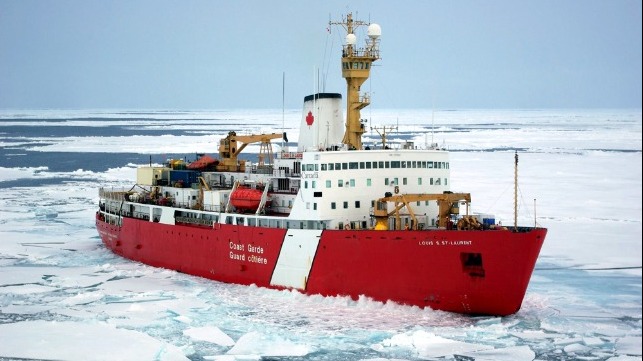Canadian Government to Build Two Large Polar Icebreakers

As the next phase of its National Shipbuilding Strategy, the Government of Canada announced plans to move forward with the construction of two Polar icebreakers. Citing the growth in commercial shipping, the serious impacts of climate change, and increased maritime activity in the arctic, the government said it is critical for Canada’s protection and security to proceed with the project. As part of the broader strategy, they also promoted that it will provide employment and ensure the strength of Canada’s shipbuilding industry.
"The new Polar icebreakers will be a game-changer for Canada's marine industry–both in their construction and the difference that a stronger presence in the Arctic will make,” said the Honorable Bernadette Jordan, Minister of Fisheries, Oceans and the Canadian Coast Guard. “Built by Canadian shipyards, these vessels will enable the coast guard to conduct critical science, supply, and other missions in our Arctic region year-round. Under the National Ship Building Strategy, we're putting thousands of Canadians to work building a fleet that will serve those communities for decades."
Both new Polar icebreakers will have capacity and ability beyond that of Canada's current largest icebreaker, the CCGS Louis S. St-Laurent, which is expected to retire in 2030 coinciding with the delivery of the first of the new vessels. Among the enhanced capabilities of the new vessel, in addition to being larger, they will be more powerful than the current generation of vessels. They will also be outfitted to ensure both year-round operations in the Arctic and operating at higher latitudes for longer periods.
The two vessels will be approximately 492 feet long with a beam of 92 feet. They will each accommodate up to 100 personnel. Specifications also call for the vessel to have a range and endurance of approximately 30,000 nautical miles with a top speed in excess of 18 knots.
Under the plan announced by the government, Seaspan Shipyards in Vancouver will design and build the first of the two vessels due for delivery by 2030. Construction of the second vessel is earmarked for David Shipbuilding of Quebec, which is currently being certified as the third shipyard in the National Shipbuilding Strategy. The shipbuilding program will also involve a broad range of smaller shipyards and contractors from across Canada. The government estimates that the construction of each vessel will generate approximately 300 jobs and will support up to 2,500 additional jobs across the marine supply chain.
The Government of Canada launched the National Shipbuilding Strategy as a long-term multi-billion-dollar program focusing on renewing the Canadian Coast Guard and Royal Canadian Navy fleet. To date, C$17.49 billion in contracts have been awarded to shipyards under the program.
The renewal of the Coast Guard was funded with C$15.7 billion from the government in 2019 calling for the construction of up to 18 new vessels with additional funding for the new icebreakers. Further, the government is investing C$2 billion for life extension, refit, and maintenance work on the existing fleet. To date, three Offshore Fisheries Science Vessels (OFSV) and 18 small vessels have been delivered to the Canadian Coast Guard under the program along with two refitted icebreakers.
“By renewing the Coast Guard fleet, we’re making sure our Coast Guard has the ships they need to carry out their important work for the entire country in the years to come,” said the Prime Minister of Canada Justin Trudeau in announcing the new icebreakers. “Today’s announcement goes far beyond one shipyard, one industry, or one part of the country. We’re re-invigorating Canada’s world-class marine industry, supporting technological innovation, and creating good, middle class jobs from coast to coast to coast. We’re building a fleet for the future, today.”
Critics charge that the initiative is highly politically motivated and timed to the upcoming elections in Canada. The previous Canadian government first announced plans for the new icebreakers in 2018. In 2019, Vard was retained to design work and then in September 2020, Seaspan Shipyards and Genoa Design announced that they had entered into an exclusive teaming agreement to design and build the future polar icebreakers.
